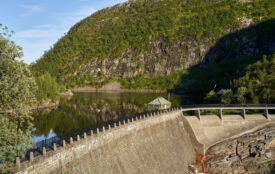Hazardous dredging started in the Chernobyl Exclusion Zone
Ukraine takes first steps for the construction of the E40 inland waterway, breaching national law and potentially releasing nuclear waste that could expose millions of people living in Kyiv and between Chernobyl and the capital to increased radiation risk.
- E40 inland waterway project is a transnational initiative to link the Baltic Sea and Black Sea through a 2,000 km-long navigable connection.
- Constructing the E40 waterway would have a range of devastating impacts – on people, the global carbon balance and on nature.
- Ukraine has started implementation of the project by dredging in the Chernobyl exclusion zone – millions of people could be at increased radiation risk.
- It is essential that a Strategic Environmental Assessment (SEA) is undertaken to steer an informed, transnational decision on the E40 project.
In Ukraine, dredging of the Pripyat River as part of the E40 waterway construction has been launched at the eight sites planned for this year. This work is being carried out as part of the restoration of a bilateral waterway between Ukraine and Belarus, and as the first steps of the much larger E40 project. Four of the eight sites lie only a few kilometres from the remains of Chernobyl’s infamous Reactor 4, where the remnants of the world’s largest nuclear catastrophe lie hidden in the muddy riverbed. This work is proceeding on the basis of incomplete analysis of radiation levels and without any detailed studies having taken place as required by Ukrainian law.
According to an independent scientific study by the French organisation ACRO, 28 million people downstream who depend on the Dnieper River for water and food could be at increased radiation risk if dredging in the Chernobyl exclusion zone continues. Furthermore, Pripyat River and the Kyiv artificial lake will become ongoing sources of radioactive contaminants because annual dredging will be needed to ensure the successful operation of the E40 waterway. This would contaminate the water supply of 8 million people, including the population of Kyiv, while irrigation and the use of dredged soil for agriculture could contaminate crops that 20 million Ukrainians depend upon.
Ariel Brunner, Birdlife International’s Senior Head of Policy for Europe and Central Asia warns that, “digging up radioactive material and sending it down the river into heavily populated areas is irresponsible. Indeed the entire E40 is an ill-conceived and potentially devastating project that is being pushed forward in complete disregard of SEA and EIA legislation.”
The planned E40 waterway is a 2,000 km-long navigable connection to link the Baltic Sea to the Black Sea. A transnational initiative of the Polish, Belarusian and Ukrainian Governments, E40 has been peddled by its proponents as a new commercial highway between the ports of Gdansk, Poland and Kherson, Ukraine, which will attract investments and create new jobs. However, the project’s 2015 feasibility study was incomplete in various respects, including consideration of environmental issues. Public participation has also not been enabled and alternatives to meet the strategic objective of better freight connections between the Black and Baltic Seas have not been adequately explored.

Polesia is Europe’s largest wetland wilderness, encompassing massive carbon sequestering peatlands and crucial habitat for endangered European wildlife. The E40 proposals involve straightening, deepening, damming, and dredging rivers in some of the most sensitive parts of Polesia. These alterations would dramatically change the area’s flood regime. Beyond the threat of radioactive sediments being disturbed and redistributed, the impacts of the E40 waterway will dry up rivers, damage landscapes, negatively impact wildlife, and destroy the livelihoods of local people. The area has huge ecotourism potential, a green development opportunity that would also be undermined should E40 go ahead. Changes to the area’s hydrology could also dry out Polesia’s peatlands, turning an important carbon sink into a serious carbon source.
There is no question that Ukraine needs improved transportation links with its neighbours and countries further afield, including the European Union, but the E40 waterway is not the only option. E40 construction will be extremely expensive, current estimates putting the initial investment at over 12 billion Euros, particularly the Polish and Belarus sections. Given the high environmental, social, technical and legal risks there is a good chance that finance will not be secured for these sections, and without them the Ukrainian element of the project will have little purpose.
Transport of goods using the E40 inland waterway would be slower, more expensive, more polluting, and less reliable than electric rail, therefore construction of E40 makes no sense. Instead the priority should be investing in the existing railway network connecting the Baltic and Black Sea. Governments should modernise border crossings, increase train capacities and speed, and improve logistics infrastructure to handle cross-border trade.








